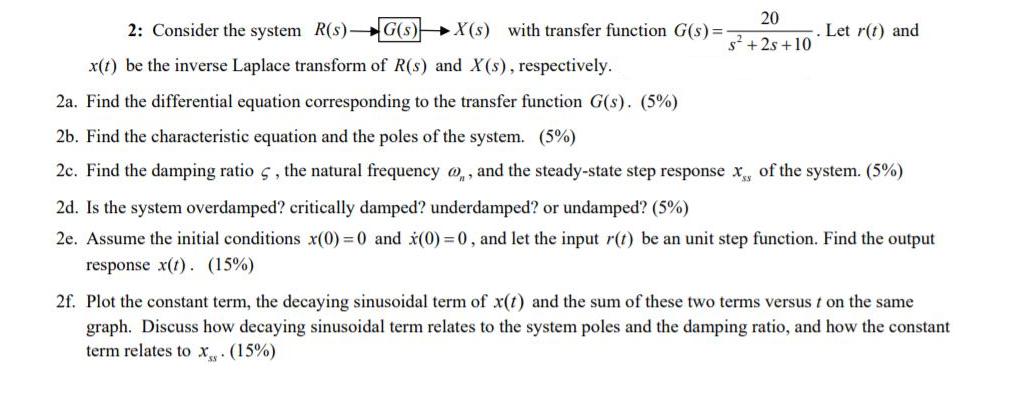Answered step by step
Verified Expert Solution
Question
1 Approved Answer
20 s +2s +10 2: Consider the system R(s)-G(s)X(s) with transfer function G(s)= x(t) be the inverse Laplace transform of R(s) and X(s), respectively.

20 s +2s +10 2: Consider the system R(s)-G(s)X(s) with transfer function G(s)= x(t) be the inverse Laplace transform of R(s) and X(s), respectively. 2a. Find the differential equation corresponding to the transfer function G(s). (5%) 2b. Find the characteristic equation and the poles of the system. (5%) 2c. Find the damping ratio , the natural frequency, and the steady-state step response x, of the system. (5%) 2d. Is the system overdamped? critically damped? underdamped? or undamped? (5%) 2e. Assume the initial conditions x(0)= 0 and x(0)=0, and let the input r(t) be an unit step function. Find the output response x(t). (15%) Let r(t) and 2f. Plot the constant term, the decaying sinusoidal term of x(t) and the sum of these two terms versus / on the same graph. Discuss how decaying sinusoidal term relates to the system poles and the damping ratio, and how the constant term relates to x. (15%)
Step by Step Solution
There are 3 Steps involved in it
Step: 1

Get Instant Access to Expert-Tailored Solutions
See step-by-step solutions with expert insights and AI powered tools for academic success
Step: 2

Step: 3

Ace Your Homework with AI
Get the answers you need in no time with our AI-driven, step-by-step assistance
Get Started


